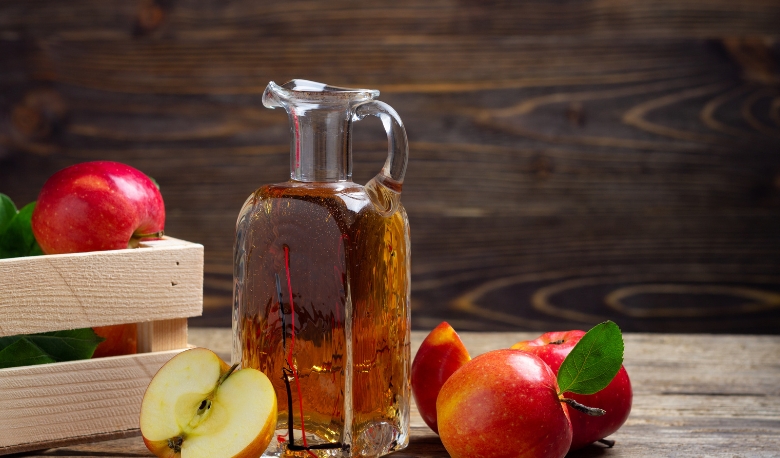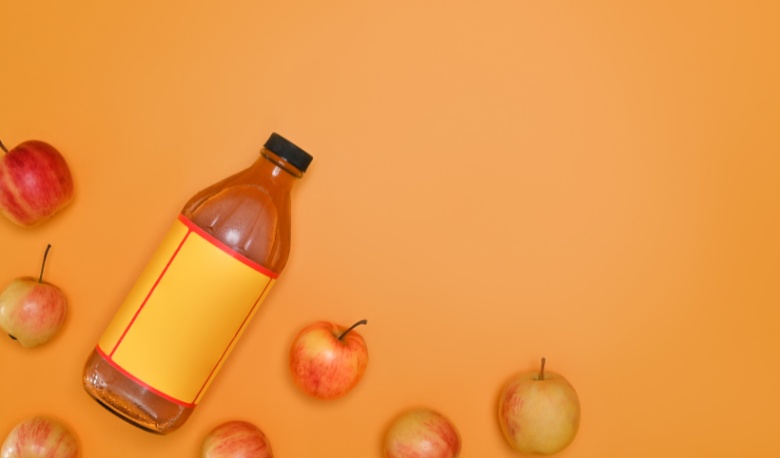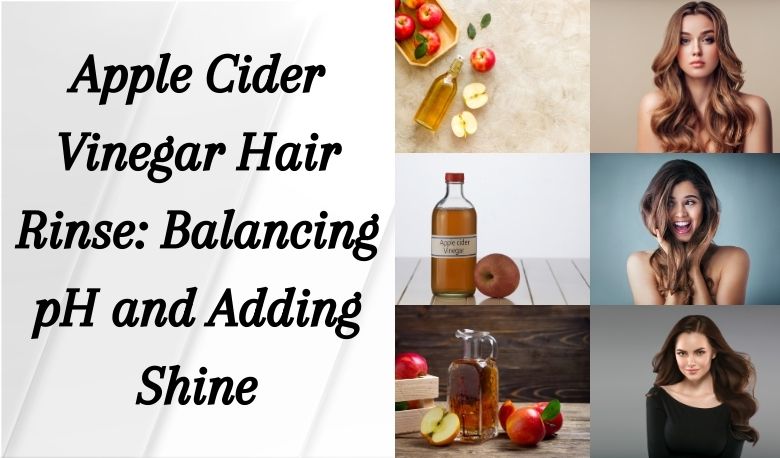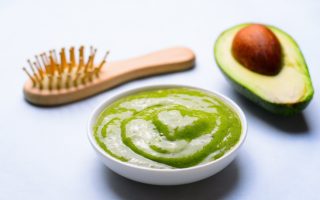Hair feeling dull, lifeless, and prone to tangles? An apple cider vinegar (ACV) rinse could be the solution to restore your hair’s natural vibrancy. ACV is a powerhouse ingredient, offering a myriad of benefits thanks to its unique properties.
What is Apple Cider Vinegar?
Apple cider vinegar is a fermented liquid produced from crushed apples. It contains acetic acid, which gives it its characteristic sour taste and potent properties. ACV also boasts vitamins, minerals, and beneficial bacteria that contribute to its overall hair-boosting effects.
Understanding Hair pH
Our scalp and hair have a naturally acidic pH level, typically between 4.5 and 5.5. Many hair care products, harsh shampoos, and environmental factors can disrupt this delicate balance, making the hair more alkaline. High alkalinity causes the hair cuticles (the outermost layer of the hair shaft) to open up, resulting in dry, frizz-prone, and easily tangled hair.

How Apple Cider Vinegar Restores pH Balance
The mild acidity of apple cider vinegar helps to gently lower the pH of your hair and scalp. This action closes the hair cuticles, resulting in several key benefits:
Enhanced Shine
Closed cuticles have a smoother, more reflective surface. Light interacts with these smooth surfaces more effectively, and is scattered in all directions, creating the perception of luminous, healthy hair. This is the same principle behind the shine we see in polished surfaces.
Reduced Frizz
When hair cuticles are open or damaged, they snag on each other, causing friction and frizz. By closing the cuticles, ACV rinses can significantly reduce this friction, allowing hair strands to lay flat and reflect light more uniformly, resulting in smoother, frizz-free hair.
Improved Detangling
Damaged cuticles with raised edges catch on each other, making hair difficult to brush or comb through. A closed cuticle is smooth and snag-free, allowing hair strands to glide past each other effortlessly. This translates to easier detangling and less hair breakage during brushing or combing.
Additional Benefits of Apple Cider Vinegar for Hair
Beyond restoring pH balance, ACV offers additional benefits for your hair and scalp:
- Antimicrobial Properties: ACV helps manage scalp conditions like dandruff by creating an environment less favorable to bacteria and fungi.
- Clarifying Action: Apple cider vinegar can effectively remove product buildup from styling gels, mousses, and even hard water residue.
- Soothes Itchy Scalp: Its anti-inflammatory properties may help calm an irritated scalp.

How to Make an Apple Cider Vinegar Rinse
Here’s a simple guide to creating and applying your revitalizing rinse:
1. Choose Your ACV:
For the best results, select raw, unfiltered apple cider vinegar. It contains the “mother,” a collection of beneficial bacteria, enzymes, and proteins that add nourishing properties to your rinse.
2. Dilution Matters:
Always dilute ACV before applying it to your hair. A good starting ratio is 2-4 tablespoons of ACV to 16 ounces (2 cups) of cool water. Adjust this as needed based on your hair type and scalp sensitivity:
- Normal Hair: Begin with 2-4 tablespoons.
- Oily Hair: You might tolerate a slightly higher concentration.
- Sensitive Scalp: Start with a weaker dilution (1-2 tablespoons), and gradually increase as tolerated.
3. Mix and Apply:
- Combine your ACV and water in a clean container. A spray bottle or squeeze bottle makes scalp application easier.
- After shampooing and conditioning as usual, tilt your head back and carefully pour the ACV rinse over your hair, focusing on the scalp.
- Gently massage the mixture into your scalp for a few seconds – this helps distribute the rinse and may feel soothing.
- Avoid getting the rinse in your eyes!
4. Rinse Thoroughly:
- Allow the rinse to sit for 1-2 minutes for optimal benefits.
- Using cool water, rinse your hair very thoroughly to remove the ACV solution and its lingering scent.
Additional Tips:
- Post-Rinse Care: If you find your hair feels a bit dry after an ACV rinse, apply a lightweight conditioner, focusing on the ends to avoid weighing down your hair.
- Frequency: Start with using your ACV rinse once or twice a week. You can adjust the frequency based on how your hair responds.
- Storage: Store any leftover diluted rinse in a tightly closed container in the refrigerator for up to a week. Discard if it turns cloudy or develops an off-odor.
With regular use, an apple cider vinegar rinse can transform your hair, leaving it softer, shinier, and more balanced.
Important Considerations
- Start Slow: If you’re new to ACV rinses, start with once or twice a week to see how your hair and scalp react. For sensitive scalps, you may want to increase the dilution.
- ACV Smell: The vinegar smell will dissipate after your hair dries.
- Condition Afterwards: Some people find an ACV rinse can make their hair feel slightly dry, so a light conditioner afterward can add extra moisture.
Who Should Try an Apple Cider Vinegar Rinse?
ACV rinses are suitable for most hair types. They can be especially beneficial if you have:
- Dull or lifeless hair
- Frizzy or tangle-prone hair
- Product buildup
- An itchy or flaky scalp
The Takeaway
Apple cider vinegar is a simple, affordable, and natural way to revitalize your hair. By restoring your hair’s pH balance, it enhances shine, smoothness, and overall manageability. Incorporate an ACV rinse into your hair care routine and discover the transformative benefits for yourself.
Important Note: While generally safe, ACV may not be suitable for everyone. Consult a dermatologist if you have any scalp concerns or sensitivities.


